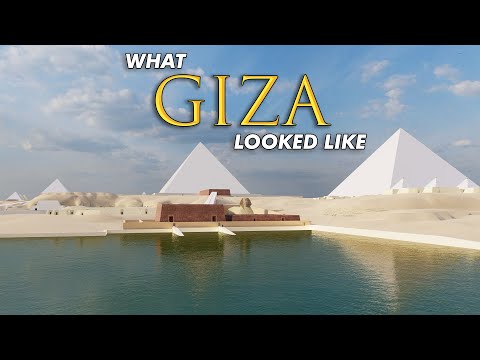
Introduction:
Imagine stepping back over four millennia into the past, walking in the presence of pharaohs, and witnessing the majestic pyramids in their original splendor. Thanks to advancements in technology, particularly in virtual reality and 4K visualization, today’s historians, architects, and enthusiasts can explore ancient Egypt like never before. The project “Virtual Egypt 4K” offers an unprecedented digital recreation of what the pyramids likely looked like at the time of their completion. This article delves into this fascinating intersection of technology and ancient history, providing insights into both the appearance and significance of these monumental structures.
Historical Background:
The pyramids of Egypt, primarily constructed during a time known as the Old Kingdom (c. 2686–2181 BC), are some of the most iconic antiquities in human history. The Great Pyramid of Giza, built for Pharaoh Khufu around 2580–2560 BC, stands as a hallmark of ancient engineering. Originally reaching a height of about 146 meters (481 feet), it was the tallest man-made structure for nearly 3,800 years until modern skyscrapers surpassed it.
Technological Overview:
“Virtual Egypt 4K” employs a combination of archaeological data, historical texts, and advanced computer graphics to rebuild not just the physical structures but also their surrounding environment. High-resolution textures offer a lifelike feel to stones that were once transported across great distances to build these pyramids. Light effects simulate how sunlight would have played on these structures when they were newly built and covered with polished limestone casing stones that made them shine brilliantly under the sun.
Visualizing the Original Pyramids:
Contrary to today’s sandy-colored facades eroded by time and elements, the original pyramids were dazzlingly bright structures that could be seen from miles away under the Egyptian sun. The outer surface was made up of smooth white Tura limestone that reflected light so intensely that Herodotus later described them as “like mountains built by giants.” These casing stones were finely jointed to give a smooth inclined surface; thus transforming them into true geometric wonders.
The capstone or pyramidion at the top was usually made out of very dense material like granite or basalt and could be covered in gold or electrum (an alloy of gold and silver), which would glow with heavenly brilliance during sunrise or sunset. This recreated visual imagery is spectacularly rendered in “Virtual Egypt 4K,” where viewers can see dynamic changes from dawn to dusk reflecting off these monumental tombs.
Cultural Significance Revisited:
Beyond architectural magnificence, understanding what these monuments represented culturally is crucial. Pyramids served as tombs for pharaohs who were considered embodiments of gods on earth; they were places where pharaohs transitioned from one life to another—ensuring their immortality through myriad spells engraved on chamber walls alongside vast wealth intended for use in their afterlife.
Impact & Future Potentials:
“Virtual Egypt 4K” not only educates its audience about ancient Egyptian architecture but also elevates our appreciation for cultural heritage preservation through technology. For educators and students alike, this tool serves as an inspiring educational resource allowing interactive learning far beyond static pictures or models.
Moreover, such virtual recreations encourage sustainable tourism—providing global access without contributing to wear-and-tear on actual sites which are often vulnerable to damage due to excessive visitation.
Conclusion:
As we continue advancing digitally, projects like “Virtual Egypt 4K” are critical not just for historical recreation but also for aiding scholarly research while providing engaging content for school curricula worldwide. By revisiting what did the pyramids look like via such high-definition re-imaginings, we gain deeper insight into our shared human heritage—a testament to our ongoing fascination with civilizations past and an ode to preserving their legacy for future generations.
